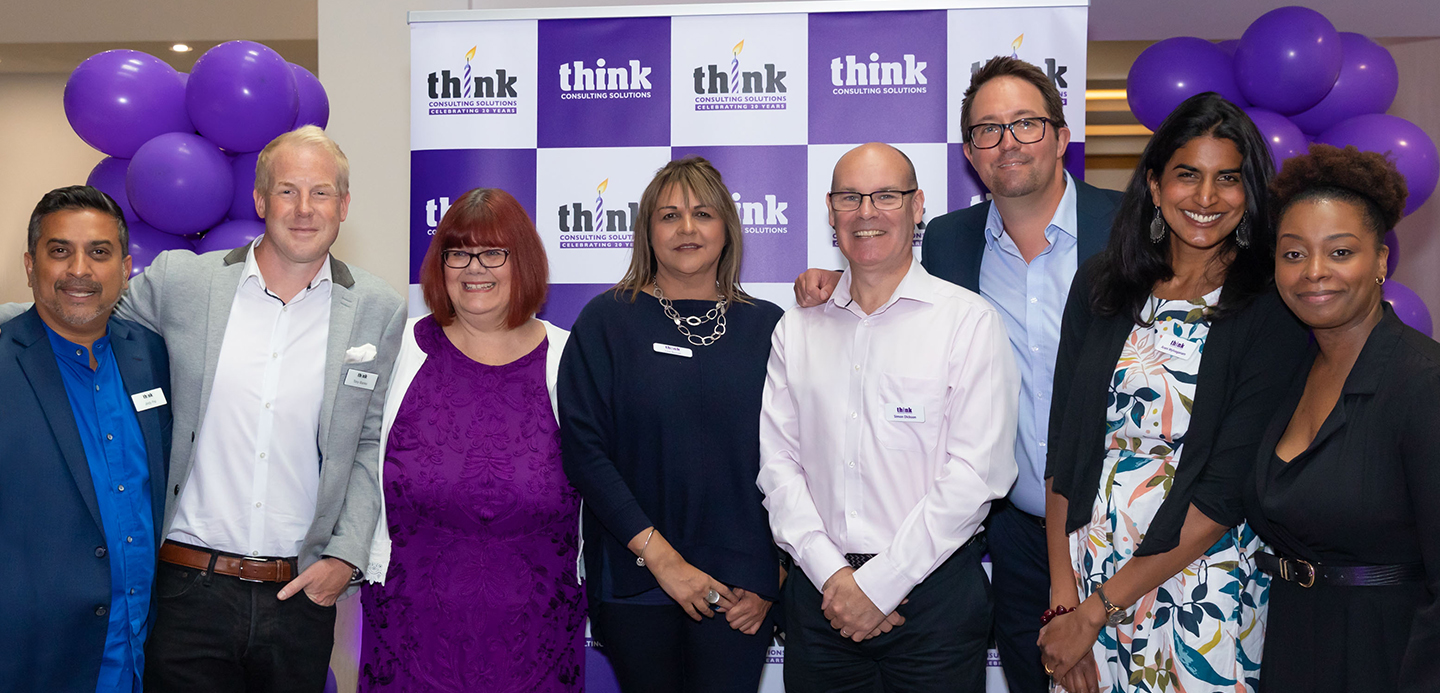
Back in January, the THINK team came together to make predictions for fundraising and charity sector trends they expected to see in 2023. We’ve reflected on these thoughts almost a year later to see how things have progressed.
[swmsc_image src=”https://thinkcs.org/wp-content/uploads/2019/12/Mich-300×300.jpg” align=”right” link=”#” lightbox=”true” lightbox_type=”image” border_radius=”10px” alt=”” title=””]
This time last year THINK’s Managing Director Michelle Chambers predicted that “give to get” fundraising techniques would proliferate in 2023 – she said:
We’ll see transactional techniques such as prize draws and subscription products multiply in response to the economic squeeze. This is a sensible approach to take, however caution must be exercised in forecasting how many supporters recruited in this way will move into a more philanthropic relationship over time. The conversion to pure donating – either cash or regular gifts – will be low.
“Income generation techniques will explore ways to access consumer discretionary spend beyond charitable giving: the economic squeeze will result in charities looking for other ways to generate income, through developing products that access other parts of discretionary spend – such as shopping online, affinity credit cards, etc. Whilst ROI and income margins are lower, these will offer an opportunity to fill the gap potentially left by traditional donations dropping.
Where are we a year later?
Lots more charity lotteries have appeared and this technique is now part of Children in Need and Comic Relief telethons (for example, their text-to-win draws). Omaze house draws have recently announced a £1m minimum donation – up from £100k – so there is evidence of this type of fundraising helping money to flow when purses are pinched.
THINK’s Director of Transformation & Innovation Matt Smith predicted that machine learning would prove to be transformative in 2023:
[swmsc_image src=”https://thinkcs.org/wp-content/uploads/2019/12/matt-300×300.jpg” align=”left” link=”#” lightbox=”true” lightbox_type=”image” border_radius=”10px” alt=”” title=””]
“For years now, artificial intelligence – or machine learning – has promised so much. On the whole, the charity sector has done little to capitalise on these developments, while other sectors have grasped the baton and moved ahead. The recent launch of ChatGPT (in November 2021), and the proposed partnership with Microsoft thought its Bing search engine, will prove to be transformative. It’s open-sourced in a way that makes AI so much easier and cheaper to use now.
“However, there are questions around ethics and a very real possibility that it may affect how we work, making some existing tasks redundant, but it will also create new roles and efficiencies that will transform sectors. AI is already impacting how content creators are writing and is likely to be the big thing of 2023. Using Chat GPT could well be as big a thing as sending your first email or making your first Google search. And every time it’s used, it gets smarter and smarter. But, to use it well, we need to hone our ability to write a great brief.”
Where are we a year later?
Could the impact of AI and tools like Chat GPT have been any bigger this year? I’ve been surprised by how much mainstream media attention the rise of AI tools have been given and how the discussion about them seems to have permeated so many areas of life.
THINK’s Director of Strategic Consultancy Simon Dickson predicted the continued growth in women driving philanthropy:
[swmsc_image src=”https://thinkcs.org/wp-content/uploads/2020/01/People-Simon-300×300.jpg” align=”left” link=”#” lightbox=”true” lightbox_type=”image” border_radius=”10px” alt=”” title=””]
“In very practical terms, the role of women in driving philanthropy is growing alongside the number of wealthy women. There are now 328 women billionaires – a rise of 36% year-on-year and the global wealth of women is estimated to reach US$81 trillion by 2023 according to Forbes. They are becoming an even more powerful force. Causes such as gender equity and minority rights will continue to be important, but the climate crisis is back on the agenda and I predict more and larger gifts to this causal area.”
Where are we a year later?
Reports that will show whether female philanthropy has grown further in 2023 will not come out until mid-2024 but there are signs that it is a powerful force. MacKenzie Scott has donated another $146m this year (to August 2023) in gifts ranging from $1m-$5m to 24 non-profits. Most of the charities she has chosen to support focus on early childhood education and development but there are donations to Fistula Foundation, Planned Parenthood, Boys and Girls Club of America and Habitat for Humanity that show she has doubled down on her commitment to equity and potentially less popular causes.
[swmsc_image src=”https://thinkcs.org/wp-content/uploads/2020/01/People-Arani-e1626342047408.jpg” align=”right” link=”#” lightbox=”true” lightbox_type=”image” border_radius=”10px” alt=”” title=””]
THINK’s Head of Insight, Arani Mylvaganam predicted a continued investment in HNWIs:
“I anticipate the interest in targeting high-net-worth individuals to continue. In-person events are very much back, and we will see a continuation of targeted prospect research to support building guest lists. Additionally, I think a spotlight is being shone on the capacity of SMEs to give (e.g., through the Work For Good platform), and many charities will start to focus more of their corporate prospect research efforts to engage smaller companies.”
Where are we a year later?
If the interest we’ve seen in our prospect research services in 2023 is anything to go by, then this prediction has definitely been realised! It has been great to see so many special events and networking occasions back in the calendar, with prospect research playing a key role.
[swmsc_image src=”https://thinkcs.org/wp-content/uploads/2019/12/4-JP-300×300.jpg” align=”left” link=”#” lightbox=”true” lightbox_type=”image” border_radius=”10px” alt=”” title=””]
In January THINK Senior Consultant Jindy Pal expected a shift to long-term income-modelling:
“I expect to see a re-focus on regular giving. During the pandemic, one-off gifts supported the short-term financial needs of organisations across all sectors. With a shift towards longer term strategies and plans, organisations will need to predict their ongoing, long-term income – and move away from the “We just need cash” approach to investment in regular–giving product development. While cash gifts are still hugely important, recurring gifts from these supporters are challenging. A focus on future sustainability, through predictable, regular, unrestricted income is the beating heart of many non-profits – so a shift to long-term income modelling, moving attrition rates through more effective stewardship, will be a big focus in 2023.”
Where are we a year later?
We’ve certainly seen a challenge with regards to managing rising attrition rates, especially amongst regular giving acquisition. However, with costs increasing across a lot of execution, it’s an enormous task for many organisations to be told to focus on the ‘bottom line’. So, finding the capacity and resource to optimise donor stewardship while prioritising strong ROI and net income and reducing attrition rates is a mammoth undertaking. As for long-term income modelling, this shift hasn’t happened, but that’s more likely to do with short-term organisational planning.
[swmsc_image src=”https://thinkcs.org/wp-content/uploads/2020/01/People-Michelle-S-300×300.jpg” align=”right” link=”#” lightbox=”true” lightbox_type=”image” border_radius=”10px” alt=”” title=””]
THINK Associate Senior Consultant Michelle Sorrell shared thoughts on charity-corporate partnerships in the climate change space:
“Lots of charities are wanting to work in climate change and are trying to work out what their place in the conversation is. Companies are struggling with what their agenda is and how they’ll meet the demands of consumers in the fields of EDI and sustainability (for example, carbon credits). They’re looking to charities to help them do that, but many don’t know how to deliver it and risk “greenwashing”. Charities need to generate income and companies are under pressure to move the dial, but there’s a massive mismatch in values and lots of leaders are not up to the job of dealing with those issues. There’s a general shift from a focus on mental health to climate change, and everyone’s scrabbling for a voice in this area. Corporate partnerships need to demonstrate impact and find a way to do that, against the backdrop of added uncertainty about whether the government is going to change soon.”
Where are we a year later?
There have been lots of development in this space and we are starting to see some clearer narratives, strategies and ambitions from charities across the sector. Some of the developments are well developed and authentic, while others are struggling to show their genuine alignment and their expertise in this area. Being able to demonstrate impact is a significant hurdle but is one that in many ways defines those that have been able to secure the funding. Collaboration has also been critical and one which is starting to also shift as funders are seeking a range of actors to drive the change and impact needed, and charities start to understand their value and input against the climate change agendas.
Senior Consultant Amanda Warhaftig emphasised the importance of charities embracing digital wallets:
[swmsc_image src=”https://thinkcs.org/wp-content/uploads/2020/01/People-Amanda-300×300.jpg” align=”left” link=”#” lightbox=”true” lightbox_type=”image” border_radius=”10px” alt=”” title=””]
“Accepting donations through digital wallets and other payment methods like Apple Pay, PayPal and GooglePay are essential. Supporters expect a giving experience similar to the way they buy and shop online, and charities need to ensure that they’re providing this experience.”
Where are we a year later?
The payment landscape in the UK has undergone significant transformations in the past decade. The use of cash continues to decline and debit card payments, including digital wallets, now account for a majority of transactions.
THINK’s Digital Projects Manager Becky Steeden felt this would be a year of growth in in-memory Facebook fundraising:
[swmsc_image src=”https://thinkcs.org/wp-content/uploads/2019/12/Becky-copy-300×300.jpg” align=”left” link=”#” lightbox=”true” lightbox_type=”image” border_radius=”10px” alt=”” title=””]
“For almost as long as native Facebook fundraising tools have existed in the UK (five years now), we’ve seen in-memory fundraisers consistently raise more income than other types of organic Facebook fundraiser – typically six times more. Charities were reporting a decline in birthday fundraisers before the pandemic hit but lockdowns saw off this decline as friends and relatives looked for ways to celebrate and give while unable to meet in-person. But over the past year, this decline in birthday fundraisers has resumed, and charities are looking for what will take their place.
“I think 2023 will be the year that in-memory Facebook fundraisers come into their own as charities look for ways to maximise this income, and proactively and strategically encourage this type of fundraising – properly embedding Facebook fundraisers into their in-memory fundraising plans and making best use of Facebook’s social graph.”
Where are we a year later?
Pancreatic Cancer UK launched its new in-memory initiative – Light a Candle in Memory – at the end of 2022 and set an incredible standard. More than 1,500 supporters joined the group, with a 33% conversion from group to registration; 67% consented to future communication, and the charity raised 21% more than their revenue target. But importantly, 80% of supporters said that the Facebook group was a space to know that they are not alone.
It’s hard to compare year-on-year trends as Facebook hasn’t had quite the same impact in 2023 as it had in 2022. There were 12 events with “in memory” as part of the title run in the UK in 2023 through GivePanel, and these events averaged 813 registrations per event. This compares with six events in 2022, with 194 registrations per event. So statistically that’s big growth in number of events and registrations per event, but clearly a very small sample size.
GivePanel had a number of customers planning to do in-memory Facebook challenges in October but the switch over to PayPal Giving Fund from Meta Pay halted some of these plans.
You can read the full article with all 18 of our January predictions and thoughts here: The top fundraising, challenges and trends for 2023. In the New Year we’ll be bringing you the THINK team’s predictions for trends in fundraising for 2024 – watch this space!
And in the meantime, we wish you a joyful and peaceful Christmas and New Year.
The THINK team
December 2023
_________________________________________________________________________________________
If you would like to discuss our THINKing further, please contact our central office on info@thinkcs.org.
You can also find us on LinkedIn at THINK Consulting Solutions and on Twitter/X @ThinkCS, where we share useful industry insights.
Related posts
Did our 2025 predictions come true? Reflections from the THINK team
We revisit our January 2025 fundraising predictions and explore what actually happened: what…


What the 2025 community fundraising mystery shop reveals about the supporter experience
This year’s THINK mystery shop shows that when charities invest in meaningful engagement,…


How do charity services shape local fundraising?
In his first month as THINK’s new Director of Data, Steven White reflects…

Sign up to our email newsletter
We call it ‘Something to THINK About’ – a regular dose of sector insight, ideas and updates, straight to your inbox.
